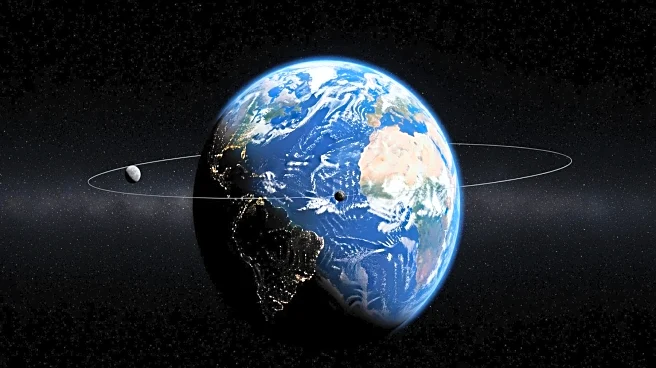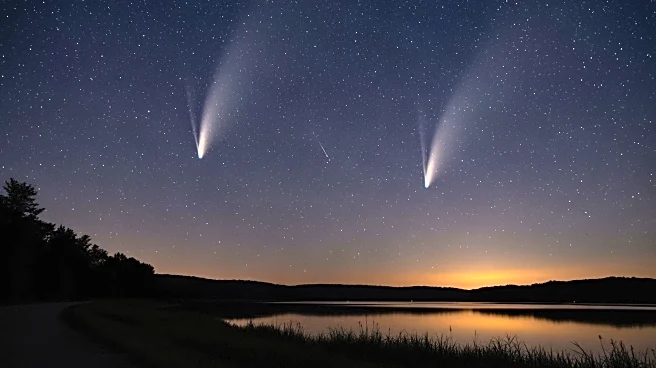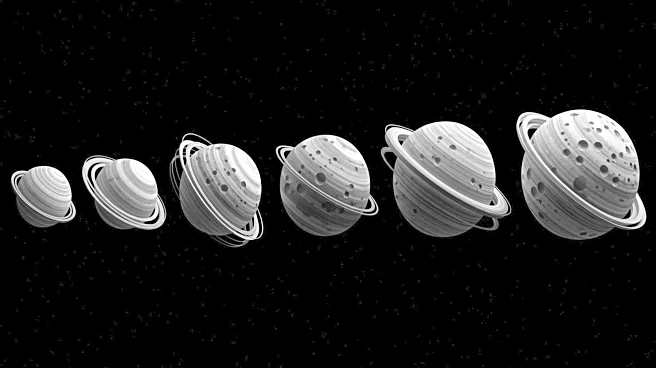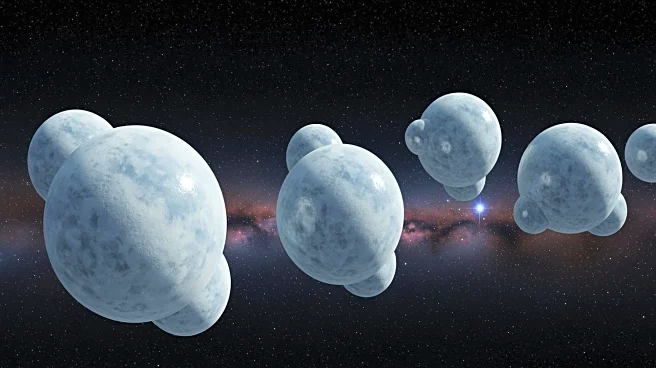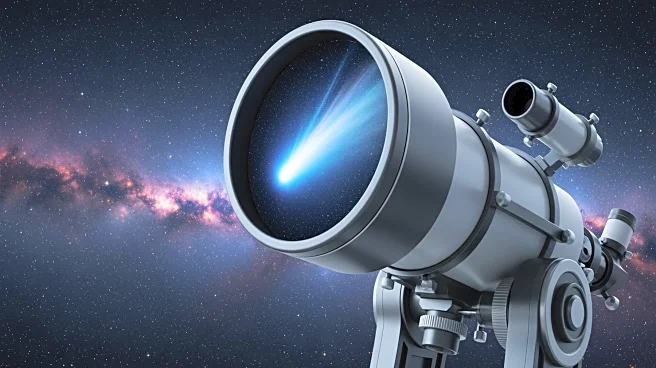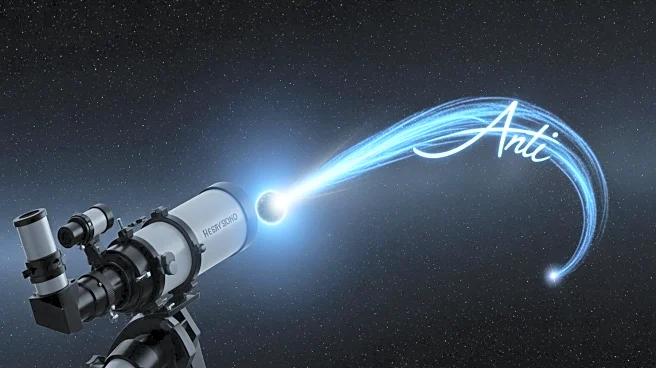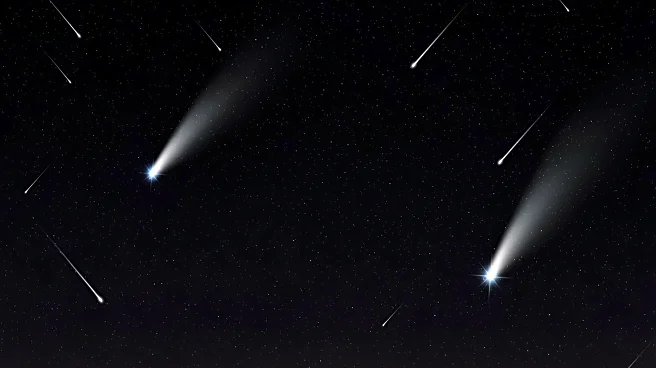What's Happening?
Ernest Opik, an Estonian astronomer, made significant contributions to the field of astronomy, particularly in the study of meteors and comets. Born on October 23, 1893, Opik was based at the Astronomical
Observatory in Tartu from 1921 to 1944. During the 1920s, he began researching the frequencies and speeds of meteors and comets. In 1932, Opik proposed the existence of a theoretical reservoir of long-period comets, suggesting a large cloud orbiting the Sun at the outermost regions of the solar system. This hypothesis was based on the observation that comets rapidly diminish once they enter the inner solar system, implying a continuous external source for their replenishment. Jan Oort later provided mathematical evidence for this cometary reserve in the 1950s, leading to the widely accepted theoretical structure now known as the Oort Cloud, or occasionally the Opik-Oort Cloud.
Why It's Important?
The work of Ernest Opik laid the foundation for understanding the origins and behavior of long-period comets. His hypothesis regarding a cometary reservoir has been crucial in explaining the presence of new comets in the solar system. The Oort Cloud theory, supported by Jan Oort's mathematical evidence, is a cornerstone in the study of cometary science and has influenced subsequent research in astronomy. Understanding the Oort Cloud helps scientists predict cometary paths and potential impacts on Earth, which is vital for planetary defense strategies. Opik's contributions continue to impact the field, providing insights into the dynamics of the solar system and the distribution of celestial bodies.
What's Next?
While the Oort Cloud remains a theoretical structure, ongoing research and technological advancements may eventually provide direct evidence of its existence. Future space missions and telescopic observations could offer more detailed insights into the composition and behavior of comets originating from this distant region. As scientists continue to explore the outer solar system, the Oort Cloud theory will remain a critical area of study, potentially leading to new discoveries about the solar system's formation and evolution.
Beyond the Headlines
Ernest Opik's work highlights the importance of theoretical research in advancing scientific knowledge. His ability to propose a groundbreaking hypothesis without direct observational evidence underscores the role of creative thinking and mathematical modeling in science. The recognition of the Oort Cloud also reflects the collaborative nature of scientific discovery, as Opik's initial ideas were expanded upon by Jan Oort and others, demonstrating the cumulative progress in the field of astronomy.



